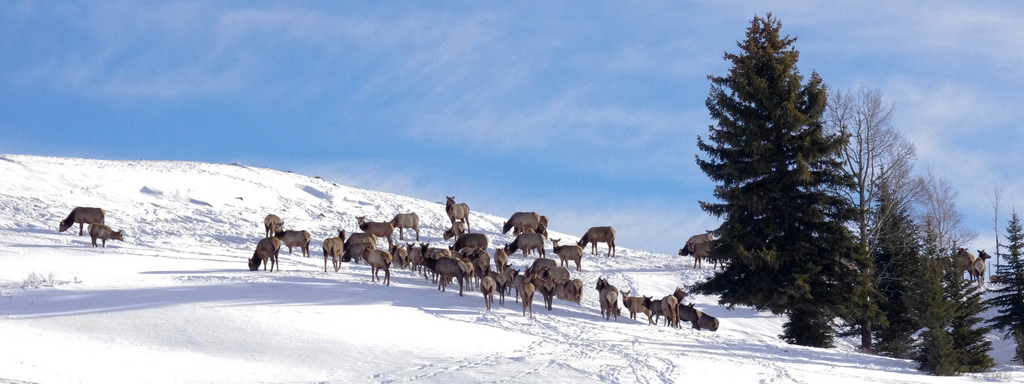Elk Are Roaming the Appalachians Once Again
Long ago, herds of majestic elk flourished in the mountains of southern Appalachia. The Cherokee Indians called them “A-wi-e-qua,” which means “deer big.” And they are big, up to 700 pounds for a full-grown male, making elk the largest of deer species. Appalachian elk populations began to decline in the 15th and 16th century from overhunting. By the late 1700s, elk were considered extinct in North Carolina and highly endangered across North America. By the 1900s, conservation groups feared that the entire species would go extinct.
Fortunately, the story doesn’t end there. In 2001, the National Park Service began a project to reintroduce elk to the Cataloochee Valley in the Great Smoky Mountains National Park. NPS reintroduced 25 elk to the area and then added another 27 elk in 2002. Since then, the elk population has grown and experts are cautiously optimistic about the increasing numbers.
“Right now, we can only estimate a minimum count of about 140,” says Eastern Band of Cherokee Indian’s Supervisory Fish and Wildlife Biologist Dr. Caleb Hickman. “We know that many are in the woods somewhere, outside of our search capabilities. I introduced a method to our group that uses fecal DNA to identify individuals so that we do not have double counts in different places and we can sample much more easier than putting a tag or collar on an animal, which is expensive and uses dangerous chemicals for sedation.”
Expert Tips for Viewing the Elk
“Keep a safe distance of 50 yards, just to be safe. If you can stay in your vehicle, that is ideal as well. If you happen upon an elk on the trail or in the river, please refrain from approaching them or cornering them. They are wild animals.”

Courtesy of the EBCI
“Do not block traffic or pull into residential property. Elk can be safely viewed from a parking area in many places. If you see them crossing, do not interact with your car. Officers or our staff often show up to help keep everyone safe. Please do what you’re asked and it will be enjoyable for everyone. ”

Rites of the Seasons
“The rut” is what biologists call the elk mating season. From mid-September through late October the Great Smoky Mountains echo with the sounds of male elk, or “bulls” making their great “bugling” mating call, and with the clatter of clashing antlers as they challenge each other for superiority. Following the mating season, elk calves are born between mid-May and mid-July.
Another exciting event to witness in the spring is the annual ritual where male elk shed their antlers. “The male elk usually shed around March,” says Hickman. “But we’ve seen them retain a rack for quite a while after. These should not be picked up by visitors.”


